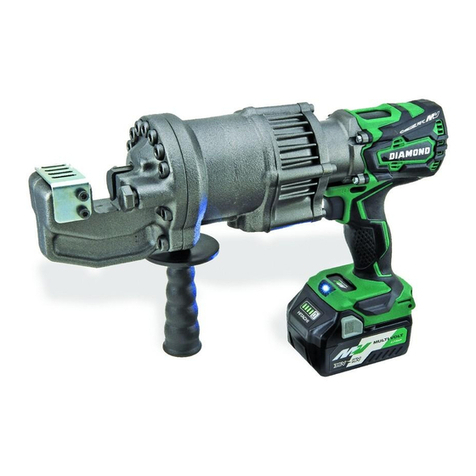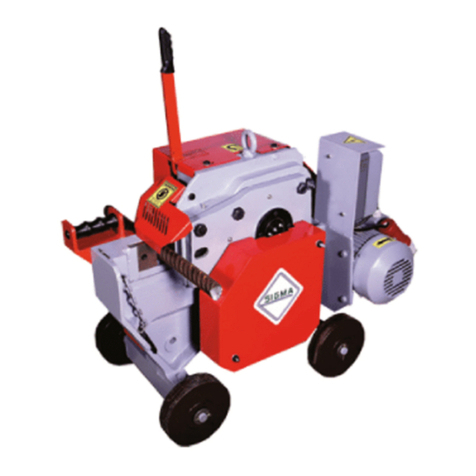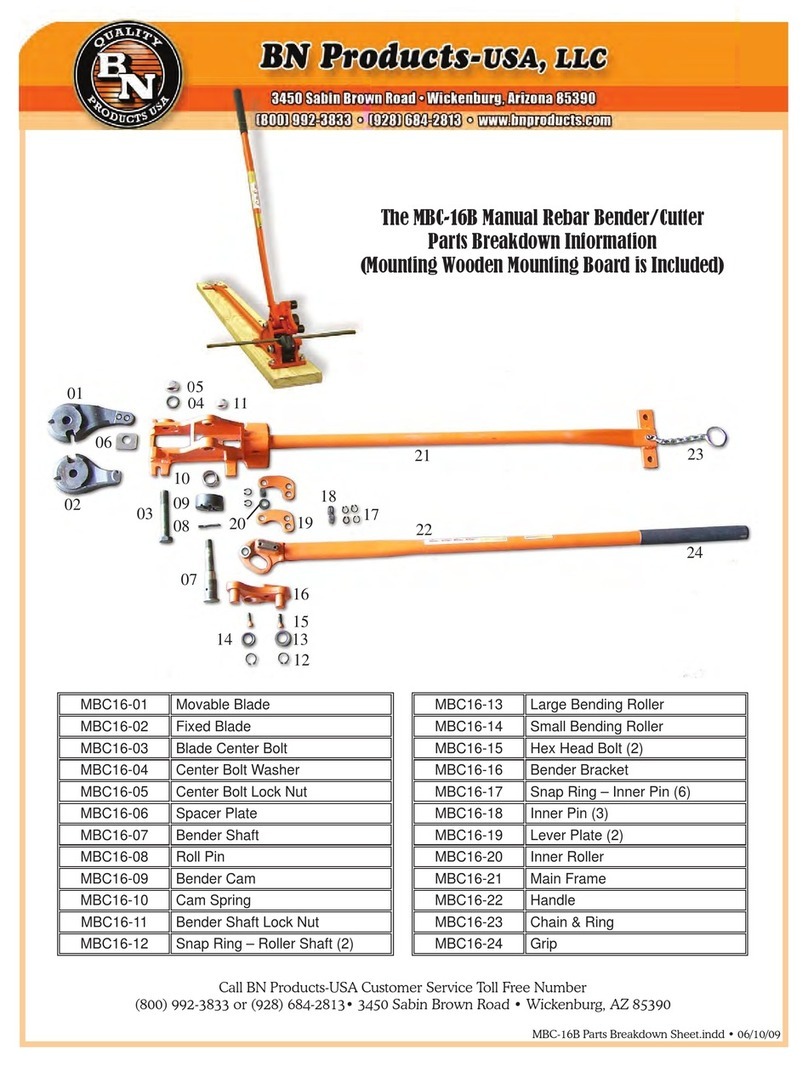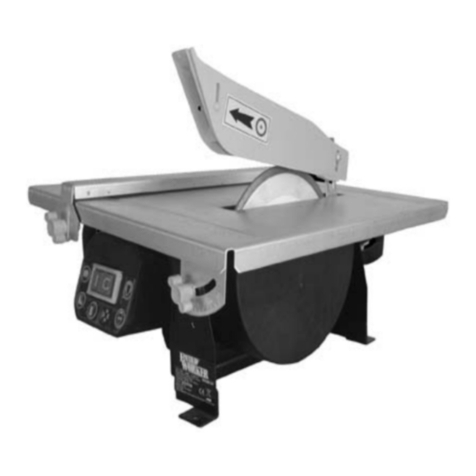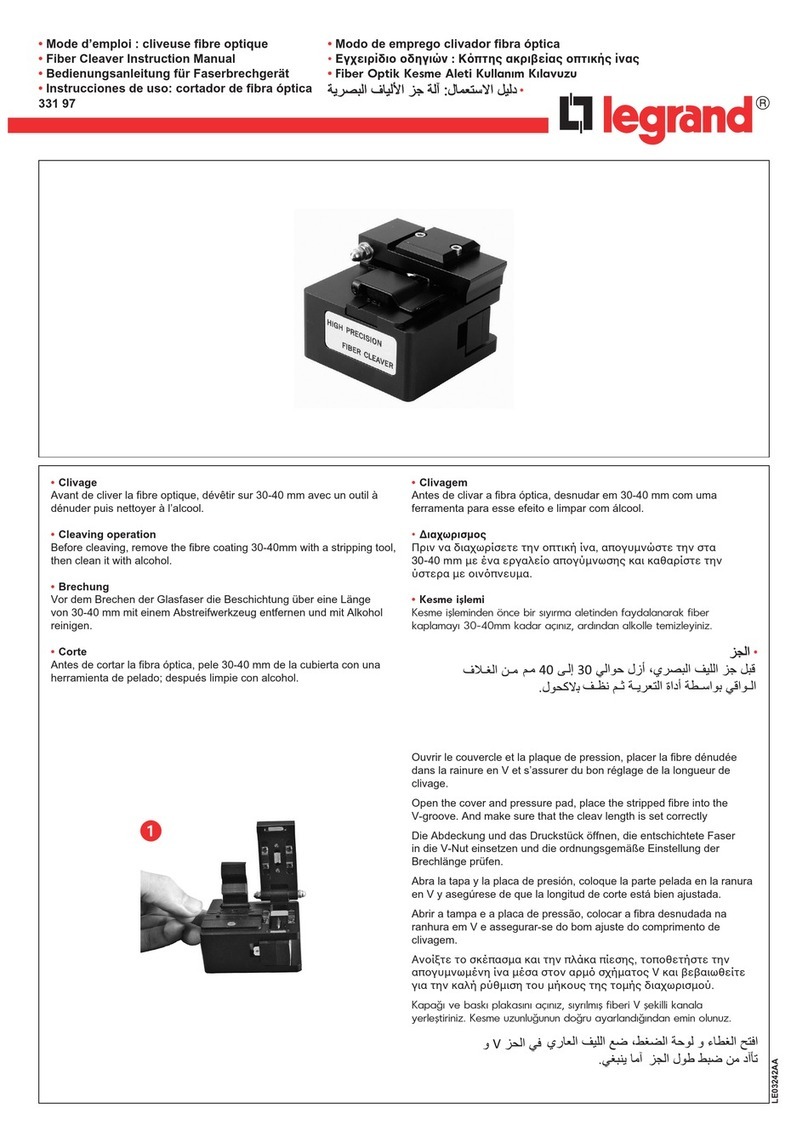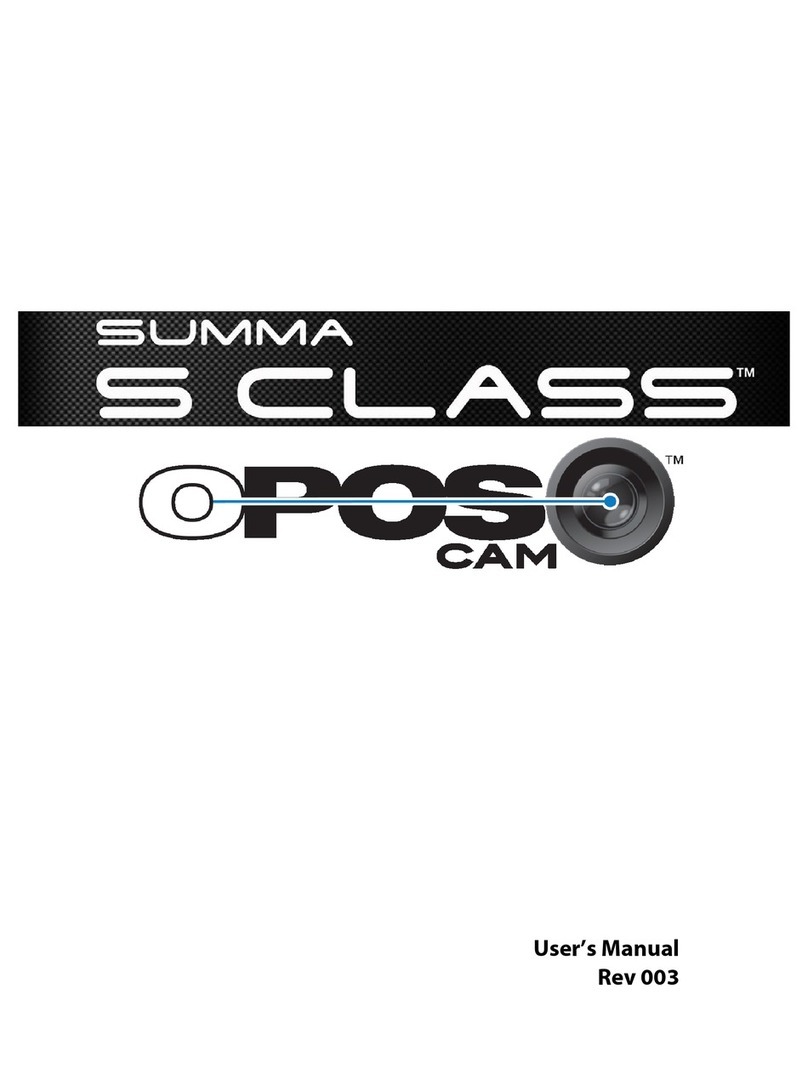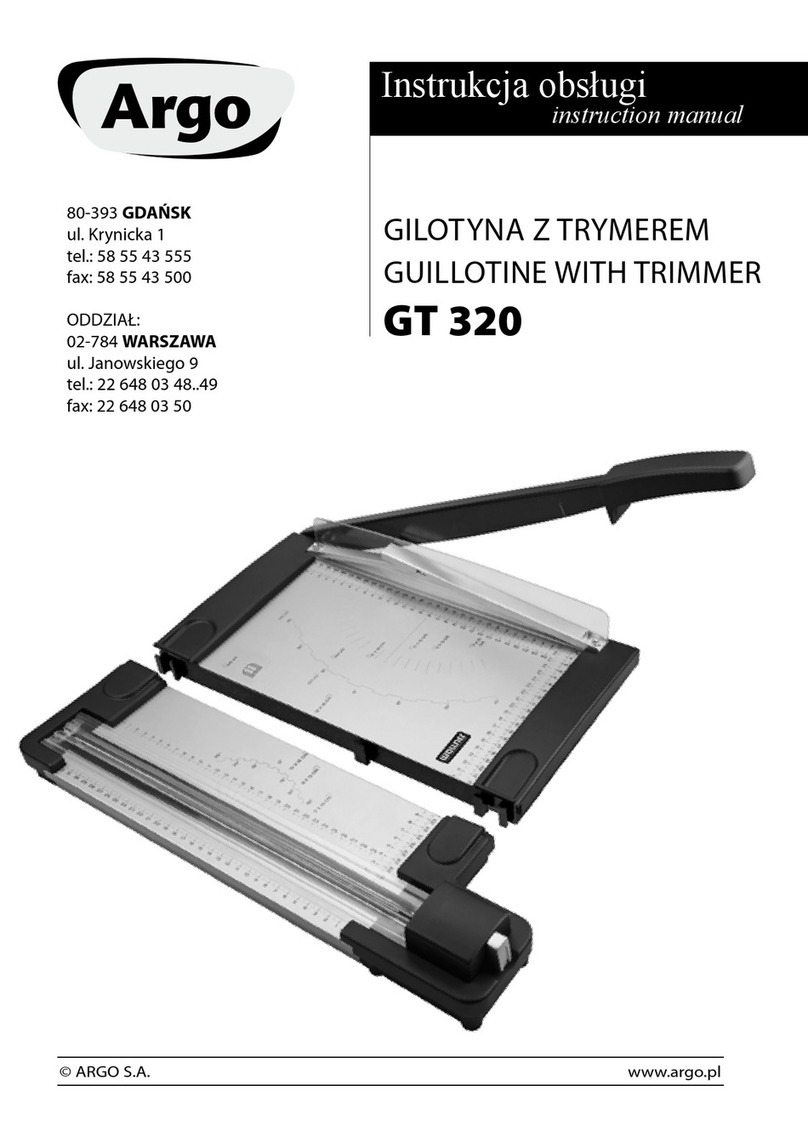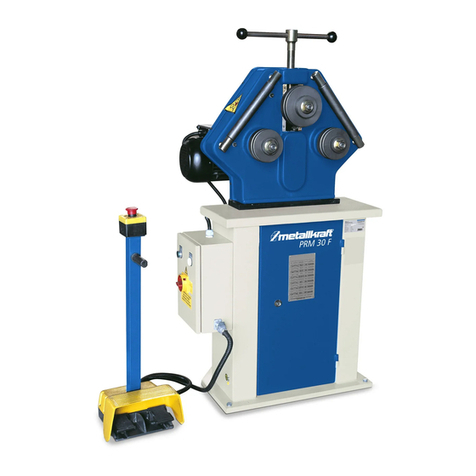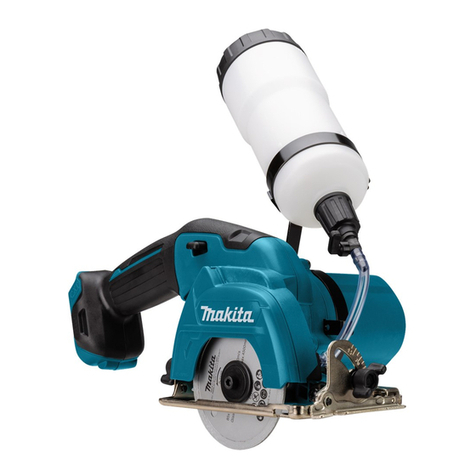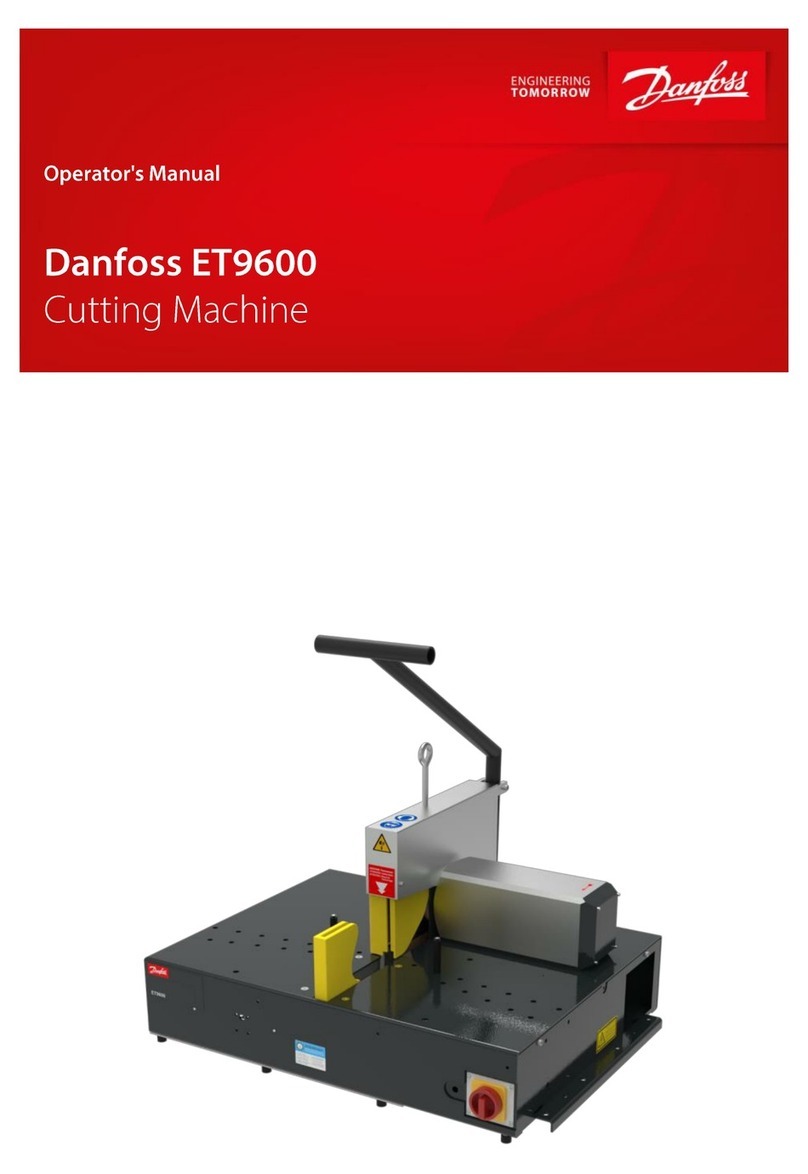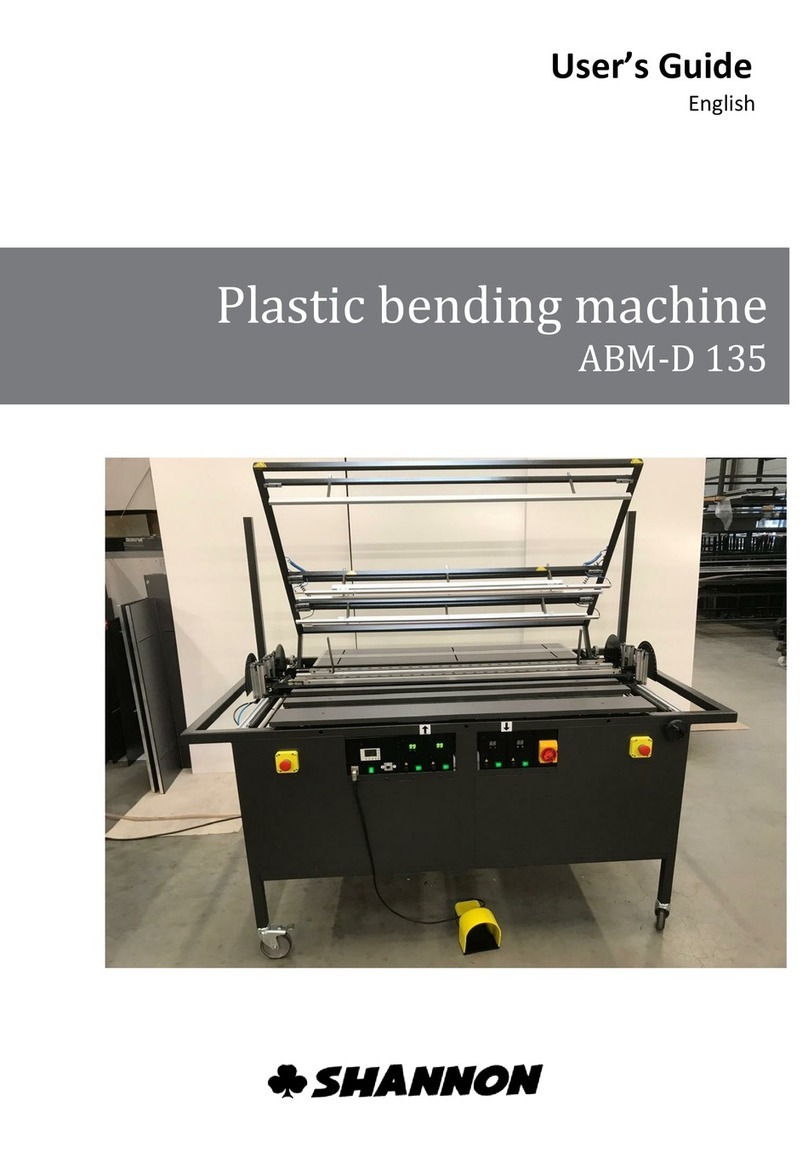BN Products DBS-16H Quick guide

Products that make money, save money and add value to your bottom line
DBS-16H Operations Manual COMP • August 9, 2017
OPERATING/SAFETY
ORIGINAL INSTRUCTIONS
DBS-16H
REBAR BENDER
TO REDUCE THE RISK OF INJURY, YOU MUST READ
AND UNDERSTAND THESE INSTRUCTIONS

Products that make money, save money and add value to your bottom line
GENERAL SAFETY RULES
WARNING: PLEASE READ AND UNDER-
STAND ALL INSTRUCTIONS.
Failure to follow all instructions listed below may
result in electric shock, re and/or serious injury.
e term “power tool” in all of the warnings listed
below refers to your mains-operated (corded)
power tool or battery-operated (cordless) power
tool.
WORK AREA SAFETY
Keep work area clean and well lit. Cluttered or
dark areas invite accidents. Do not operate power
tools in explosive atmospheres, such as in the pres-
ence of ammable liquids, gases or dust. Power
tools create sparks which may ignite the dust or
fumes.
Keep children and bystanders away while operat-
ing a power tool. Distractions can cause you to
lose control.
ELECTRICAL SAFETY
Power tools plugs must match the outlet. Never
modify the plug in any way. Do not use any
adapter plugs with earthed (grounded) power
tools. Unmodied plugs and matching outlets will
reduce risk of electric shock.
Avoid body contact with earthed or grounded sur-
faces such as pipes, radiators, ranges and refrigera-
tors. ere is an increased risk of electric shock if
your body is earthed or grounded.
Do not expose power tools to rain or wet condi-
tions. Water entering a power tools will increase
the risk of electric shock.
Do not abuse the cord. Never use the cord for car-
rying, pulling or unplugging the power tool. Keep
cord away from heat, oil sharp edges or moving
parts. Damaged or entangled cords increase the
risk of electric shock.
When operating a power tool outdoors, use an
extension cord suitable for outdoor use. Use of a
cord suitable for outdoor use reduces the risk of
electric shock.
Do not use AC only rated tools with a DC power
supply.
PERSONAL SAFETY
Stay alert, watch what you are doing and use com-
mon sense when operating a power tool. Do not
use a power tool while you are tired or under the
inuence of drugs, alcohol or medication. A mo-
ment of inattention while operating power tools
may result in serious personal injury.
Use safety equipment. Always wear eye protection.
Safety equipment such as dust mask, non-skid
safety shoes, hard hat, or hearing protection used
for appropriate conditions will reduce personal
injuries.
Avoid accidental starting. Ensure the switch is
in the o-position before plugging in. Carrying
power tools with your nger on the switch or
plugging in power tools that have the switch on
invites accidents.
Remove any adjusting key or wrench before
turning the power tool on. A wrench or a key le
attached to a rotating part of the power tool may
result in personal injury.

Products that make money, save money and add value to your bottom line
Do not overreach. Keep proper footing and bal-
ance at all times. is enables better control of the
power tool in unexpected situations.
Dress properly. Do not wear loose clothing or
jewelry. Keep your hands, gloves, hair and clothing
away from moving parts. Loose clothes, jewelry or
long hair can be caught in moving parts.
If devices are provided for the connection of dust
extraction and collection facilities, ensure these
are connected and properly used. User of these
devices can reduce dust-related hazards.
Keep handles dry, clean and free from oil and
grease. Slippery hands cannot safely control the
power tool.
POWER TOOL USE AND CARE
Do not force the power tool. Use the correct power
tools for your application. e correct power
tool will do the job better and safer at the rate for
which it was designed.
Do not use the power tool if the switch does not
turn in on and o. Any power tool that cannot be
controlled with the switch is dangerous and must
be repaired.
Disconnect the plug from the power source and/
or the battery pack from the power tool before
making any adjustments, changing accessories, or
storing power tools. Such preventive safety mea-
sures reduce the risk of starting the power tool
accidentally.
Do not cover air vents or operate the tool on dirt.
Use a plywood base under the tool to keep arma-
ture and fan clean. If the vents are covered, the
motor will overhear and may burn out.
Store idle power tools out of the reach of children
and do not allow persons unfamiliar with the
power tool or these instructions to operate the
power tool.
Power tools are dangerous in the hands of un-
trained users.
Maintain power tools. Check for misalignment or
binding or moving parts, breakage of parts and
any other condition that may aect the power
tools operation. If damaged, have the power tool
repaired before use. Many accidents are caused by
poorly maintained power tools.
Keep cutting tools sharp and clean. Properly main-
tained cutting tools with sharp cutting edges are
less likely to bind and are easier to control.
Use the power tool, accessories and tool bits etc.,
in accordance with these instructions and in the
manner intended for the particular type of power
tool, taking into account the working conditions
and the work to be performed. Use of the power
tool for operations dierent from those intended
could result in a hazardous situation.
SERVICE
Have your power tool serviced by a qualied re-
pair person using only identical replacement parts.
is will ensure that the safety of the power tool is
maintained.
SPECIFIC SAFETY RULES
Hold power tool by insulated gripping surfaces
when performing an operation where the cutting
tool may contact hidden wiring or its own cord.
Contact with a “live” wire will make exposed metal
parts of the too] “live” and shock the operator.

Products that make money, save money and add value to your bottom line
Use clamps or other practical way to secure and
support the workpiece to a stable platform. Hold-
ing the work by hand or against your body is
unstable and may lead to loss of control.
Never leave the trigger locked “ON”. Before plug-
ging the tool in, check that the trigger lock is
“OFF”. Accidental start-ups could cause injury.
Keep hand away from cutting area and moving
parts.
Do not use dull or damaged blades, cutter blocks
and rollers. Damaged part(s) can break easily or
could cause injury.
Maintain labels and nameplates.
GROUNDING
WARNING: Improperly connecting the ground-
ing wire can result in the risk of electric shock.
Check with a qualied electrician if you are in
doubt as to whether the outlet is properly ground-
ed. Do not modify the plug provided with the tool.
Never remove the grounding prong from the plug.
Do not use the tool if the cord or plug is damaged.
If damaged, have it repaired by a BN Products-
USA service facility before use. If the plug will not
t the outlet, have a proper outlet installed by a
qualied electrician.
Grounded Tools (Single Insulated Tool):
Tools with three prong plugs have a three wire
cord and three prong grounding plug. e plug
must be connected to a properly grounded outlet.
If the tool should electrically malfunction or break
down, grounding provides a low resistance path to
carry electricity away from the user, reducing the
risk of electric shock. e grounding prong in the
plug is connected through the green wire inside
the cord to the grounding system in the tool. e
green wire in the cord must be the only wire con-
nected to the tool’s grounding system and must
never be attached to an electrically “live” terminal.
Your tool must be plugged into an appropriate
outlet, properly installed and grounded in accor-
dance with all codes and ordinances.
Double Insulated Tools:
Tools with Two Plugs. Tool marked “Double
Insulated” do not require grounding. ey have a
special double insulation system.
EXTENSION CORDS
Grounded tools require a three wire extension
cord. Double insulation tools can use either a two
or three wire extension cord. As the distance from
the supply outlet increases, you must use a heavier
gauge extension cord. Using extension cords with
inadequately sized wire causes a serious drop in
voltage, resulting loss of power and possible tool
damage. Refer to the table shown to determine the
required minimum wire size.
Recommended Minimum Wire Gauge for Extension Cords
100V I 115V (50/60Hz) 230V (50/60Hz)
Cable length Cable size (AWG) Nominal diameter
Up to 10m (25.) 16 l.Omm2
Up to 15m (50 .) 14 1.25mm2
Up to 30m (100.) 10 1.5mm2

Products that make money, save money and add value to your bottom line
360° Rotatable between motor and pump case
SPECIFICATION:
MODEL DBS-16H
Power Supply 110V / 115 /230V AC only
Wattage 1020W
Motor Double insulated motor
Max. rebar dia. 16mm (5/8”)
Bending speed 4 - 5 sec.
Bending radius R.31.0 mm
Max. tensile strength 620N/mm2
Bending angle Up to 90°
Dimensions (Lx WxH) 470 x 145 x 270 mm
Weight 25.35 lbs. (11.5 Kg)

Products that make money, save money and add value to your bottom line
PRE-USE CHECKS:
1. WARNING: Do not expose the tool to rain or
wet conditions. Water entering a power tools
will increase the risk of electric shock.
2. Wear safety goggles, safety glasses with side
shields or a face shield when using these tools.
3. Check that the power source is appropriate to
the tool.
CARE: If voltage is too high, the motor will
burn out. If voltage is too low, insucient
power will be generated. Never use DC cur-
rent.
4. Check that cord is undamaged and that plug is
not loose.
CAUTION: Cut or abraded covering could
result in a short and electric shock to operator.
5. Check and keep work area clean and enough
work space.
6. Check condition of bending roller, center
roller and roller bolts - CHECK FOR CRACKS
OR DAMAGE, LOOSEN BOLTS
7. Screw up roller bolts.
CAUTION: Using loose rollers may result in
injury to operator as well as damage to the
tool.
8. Before plugging in, make sure that switch lock
button is OFF.
CAUTION: If switch lock button is ON, the tool
starts as soon as it is plugged in.To disengage the
switch lock button, pull trigger-switch to allow the
switch lock button pop out.
BENDING REBAR (Max.l6mm 5/8” & Tensile
strength 620 N/mm2)
WARNING: RESTRICT USE TO DESIGNATE
MATERIALS
is tool is rated for 16mm Max. Tensile strength
620N/mm2 Rebar only. ere is always a chance
that the end of material may break and shoot out,
especially if the material harder that those speci-
ed. Exceeding designated material specications
greatly increase this risk and will also damage
the tool. Do not attempt to use the tool for rebars
harder or thicker than those specied.
OPERATING INSTRUCTIONS
CAUTION: Check condition of center roller and
bending roller. Screw up those bolts. Using loose
rollers may result in injury to operator as well as
damage to the tool.
Make sure the unit is plugged into the proper
outlet 110V, 115V or 230V 50/60Hz. (Check the
voltage of your DBS-16H.)
WARM UP
In cold weather, warm up the tool for 30-60 sec-
onds so that the hydraulic oil reaches the proper
viscosity. Pull trigger-switch to move bending arm
then release the switch when it has reaches its full
stroke and returns. Repeat 4-5 times without rebar.
BENDING HEIGHT ADJUSTMENT
Loosen wing bolt, adjust measuring rod and
tighten the wing bolt.

Products that make money, save money and add value to your bottom line
STOPPER BOLT ADJUSTMENT
AND BENDING
e stopper bolt functions to maintain the rebar in
the correct position during bending and must be
properly set for each size of rebar before bending.
Check that release lever is in CLOSE positon.
Insert a rebar between bending roller and center
roller.
Loosen nut, screw out the stopper bolt until it is
just touching the rebar and tighten the nut.
Pull the trigger-switch and keep depressed while
the bending arm (roller) moves and bends the
rebar. When 90° bend is completed, release the
trigger-switch. e bending arm (roller) returns
automatically. When a shallower bending angle is
required, release the trigger-switch at an interme-
diate point. e bending arm (roller) stops then
turn the release lever to OPEN positon, the bend-
ing arm (roller)
returns to the start position.
In the event that bending ann (roller) should fail
to return automatically for any reasons (e.g. the
bending arm (roller) has become jammed), tum
the release lever to OPEN position. Make sure the
release lever is in CLOSE position before resuming
operation
CLOSEST BEND TO SURFACE
e closest bend is 65mm to wall and 58mm to
oor. Make sure there is adequate space for bend-
ing.
POINTS OF ATTENTION
1. 1. Switch “OFF”. Disconnect tool from outlet
when not in use and before cleaning, adjust-
ing or servicing. Do not disconnect plug from
outlet by pulling the cord. Always check that
the switch is OFF before plugging in.
2. Do not cover air vents.
3. CARE: If vents are covered, motor will over-
heat and may bum out.
4. If hydraulic oil exceeds 70°C (158°F) in tem-
perature, power will drop. Allow unit to cool
before resuming operation. (Be particularly
careful in summer, when the aluminum pump
case heats up quicker.)
5. If a drop in power is observed and motor is an
unusually hot, check carbon brush.

Products that make money, save money and add value to your bottom line
CLEANING
Clean your tool every day, preferably immediately
aer use.
WARNING: To avoid accidents always disconnect
the tool from the power supply before cleaning or
performing any maintenance.
I. Wipe or brush away dirt and metal lings. Keep
housing and piston free of dirt and iron lings.
Pay particular attention to the lower half of the
piston, where dirt is more easily accumulated.
2. Once piston has been retracted, pull trigger
switch long enough to partially. Unplug unit.
Check piston for accumulated dili and iron lings
that may be jamming the piston.
3. Certain cleaning agents and solvents damage
plastic parts.
CAUTION: Do not use an air gun: blasting with
air can cause metal lings and/or dust to get into
eyes and respiratory system. Wipe or brush away
all dirt and metal lings.
OIL-LEVEL CHECK (ADD OIL)
As the tool is hydraulically operated, the oil-level
must be checked at frequent intervals, prefer-
ably once a year. Failure to maintain the oil at the
proper level results in a drop in pressure and loss
of power.
CAUTION: Hydraulic oil is highly ammable.
Keep away from sparks and open ame. Do not
smoke. Hydraulic oil may cause inammation of
the eyes and skin. If ingested, it could cause diar-
rhea and vomiting. In case of eye contact, rinse in
clean water for at least 15 minutes and consult a
physician. In case of skin contact, wash thoroughly
with soap and water. In case of ingestion, consult a
physician immediately.
Do not induce vomiting.
1. Oil should be warm but not hot.
2. If bending arm is still moving, run the bend-
ing arm and stop just before it reaches its full
stroke and returns.
3. Remove oil-plug and seal-washer (packing).
CAUTION: Never remove oil-plug when unit
is hot or oil will spurt out.
4. Check that oil is level with bottom of plug
hole (i.e. that pump case if full to the brim).
If oil level is low, top up with fresh hydraulic
oil with anti-foam and anti-abrasion proper-
ties (ISO viscosity grade VG46, e.g. Tellus46
(Shell), DTE-25 (Mobil) or Uni-Power VG46
(Esso).
5. Aer topping up, extract air from system.
Gently tilt tool lengthwise and return it to a
level position. Top up again and tilt in the op-
posite direction.
CARE: Tool cannot function properly if oil
contains air bubbles.
6. Replace the oil-plug and seal-washer. Run the
bending arm until it automatically returns to
the starting position.
7. Repeat 2- 6 until the oil is fully added.
8. Check that oil-plug is tightened.
NOTE: Dispose of hydraulic oil in accordance
with local regulations. Do not pour into the sea, a
river, a lake or drains.
BOLT TIGHTNESS
Once a week, or aer every 30 times use, check
the tightness of all bolts. Especially those securing
housing to the cylinder, bending roller and center
roller. Using loose rollers may result in injury to
operator as well as damage to the tool.

Products that make money, save money and add value to your bottom line
CARBON BRUSHES
Inspect the two carbon brushes at least once every
two months. (Nominal brush life is 200 hours).
CARE: Worn brushes will result in power loss;
cause the motor to run hot and irreparably dam-
age the armature.
1. Disconnect tool from electrical outlet.
2. Remove Tail cover. Unscrew both brush caps
and pull out carbon brushes.
3. Replace brushes if less than 6mm in length.
(We recommend the automatic stop carbon
brush for replacement.) Pair of carbon brush :
Part#. 7HTK999041 B
OVERHAUL
Return the unit to an authorized distributor for
overhaul at least once every two years, sooner if
subject to heavy use. Ignorance of proper operat-
ing procedures can lead to accidents. If you have
any other questions about any procedures, please
contact the nearest authorized distributor.
*Specications are subject to change without prior
notice.
Other manuals for DBS-16H
1
Table of contents
Other BN Products Cutter manuals
Popular Cutter manuals by other brands

Milwaukee
Milwaukee C12 PC Operator's manual
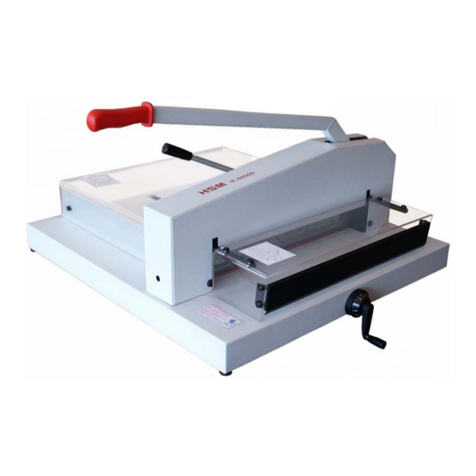
HSM
HSM R 48000 operating instructions

Gröne
Gröne GTS 18-180 operating instructions
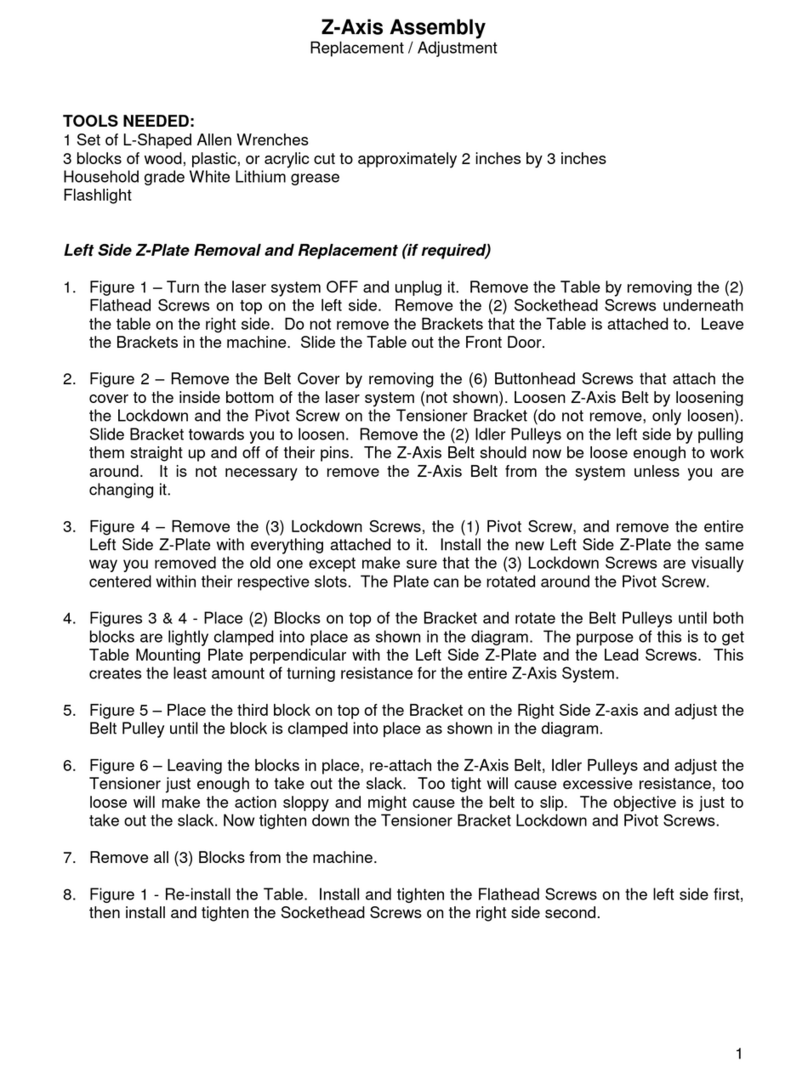
Universal Laser Systems
Universal Laser Systems Z-Axis Assembly instructions

Mafell
Mafell KSS 80 Ec/370 Original operating instructions and spare parts list
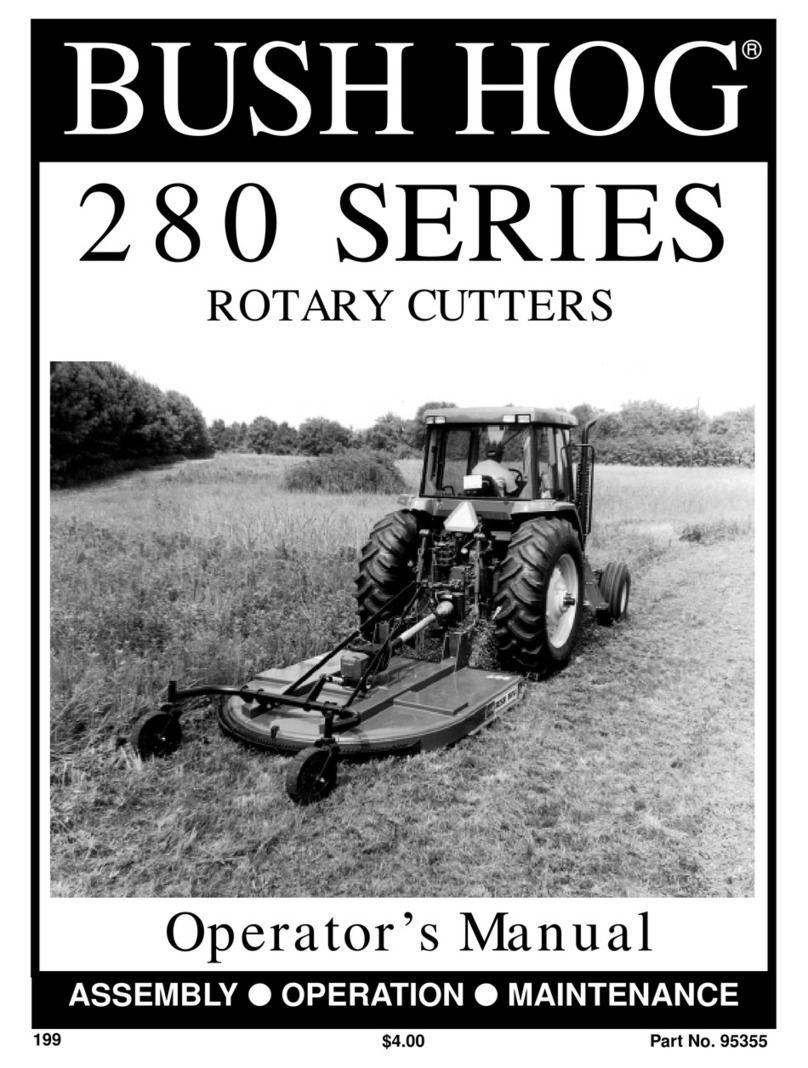
Bush Hog
Bush Hog 280 Series Operator's manual
